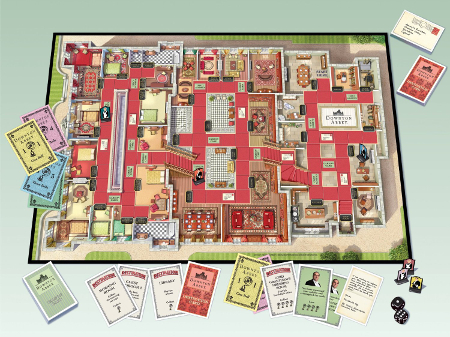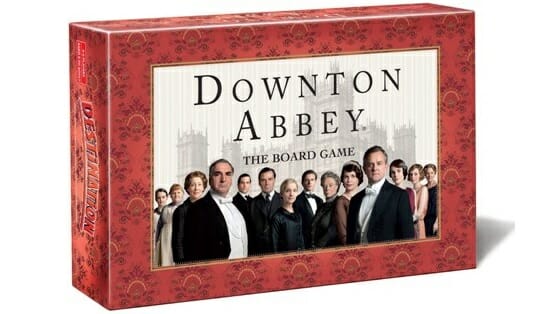Introducing Endless Mode: A New Games & Anime Site from Paste
Downton Abbey, the award-winning British costume drama/soap opera that has become a global hit series, doesn’t seem like the ideal fit for an adaptation to the board game world, but that is exactly what’s happened. Downton Abbey: The Board Game casts the players as maids or footmen, drawing destination cards that make them roll the dice and run around the abbey in exchange for “bells” (reward points), while trying not to be waylaid by Carson cards or letters that require unpredictable actions. It is a terrible game.
This is the archetype of the brainless “roll the dice, move your mice” style of boardgame that has fallen out of fashion in the last two-plus decades, since Klaus Teuber’s Settlers of Catan triggered a shift in gamers’ tastes. The Downton Abbey game calls for almost no decision-making on the part of the players, very little interaction between players, and no way to plan around the hazards on the board.
Each player has to draw three destination cards, with a task (just window dressing) and a destination on it as well as a reward from one to four bells, with no apparent connection between the destination and the reward for it. Once a player completes a destination, s/he must draw another card from the deck; play continues until the deck is exhausted, after which players must return to the Servants’ Hall, with the first player to complete all of his cards and return to the Hall receiving a ten-point bonus – significant in a game where there are only 78 total bells available through the destination card deck.

The hazards on the board, Carson cards and letters, can’t be avoided – you’re stuck with your roll, and alternate paths will still land you on one of those hazard spaces. Carson cards can be positives or negatives; they can award or deduct bells, move players around the board, or direct you to draw a letter. Letter cards similarly provide unpredictable, unavoidable changes. You draw a card and hope for the best.
The only interaction between players comes if one player lands on a square occupied by another one, where the new player may choose to send the other back to the Servants’ Hall. But the board is so big and the destinations so thoroughly spread out that there’s very little chance of this happening in a two-player game and only a slightly higher chance with more players. This produces a game of simultaneous solitaire, where players can just race through their turns without much regard to what anyone else is doing, and with no ability to slow or stymie a player who, through sheer luck, has racked up more points.
The game design isn’t the only flaw in Downton Abbey, however; the show’s trademark wit is completely absent from the game. Destination cards are perfunctory, but even the Carson cards and letters are unfunny. Some aren’t written for laughs, but even those that are fall flat. With four seasons completed, giving us a host of characters and inside jokes from which the game’s authors could have drawn to make players laugh, this is a huge lost opportunity, and the one thing that might have salvaged the overall game.
Downton Abbey: The Board Game plays two to six players, and while it’s listed for ages eight and up, there’s nothing here a four-year-old who can count up to twelve would find difficult. Even if you love the series, the game draws so little from the show that I can’t recommend it.
Keith Law is a senior baseball writer for ESPN.com and an analyst on ESPN’s Baseball Tonight. You can read his baseball content at search.espn.go.com/keith-law and his personal blog the dish, covering games, literature, and more, at meadowparty.com/blog.

